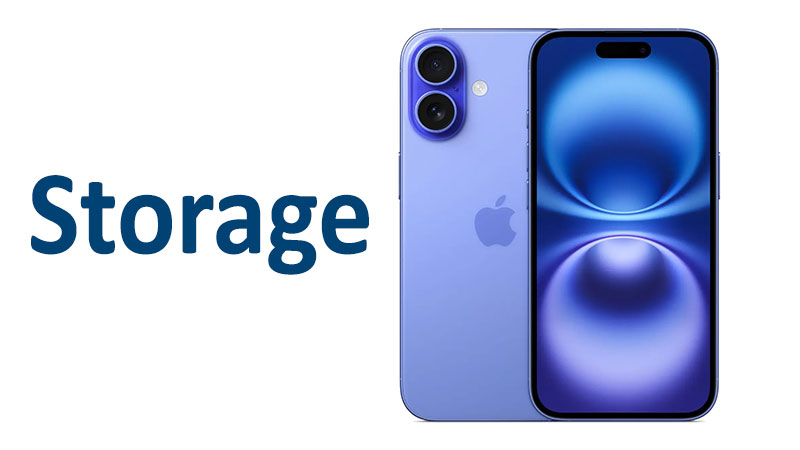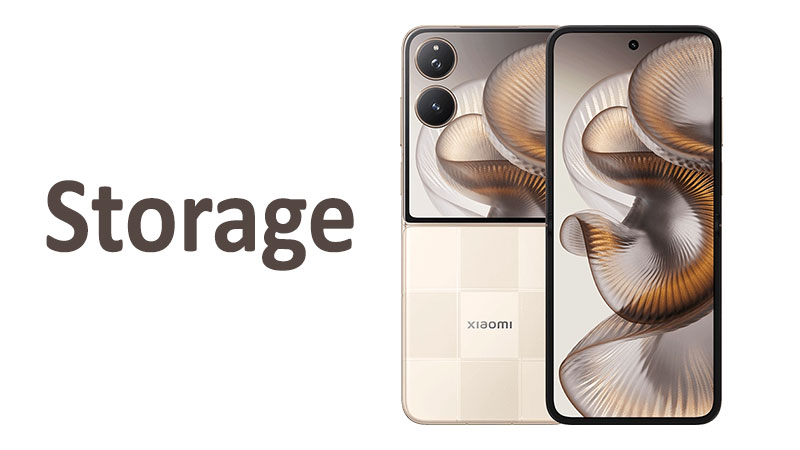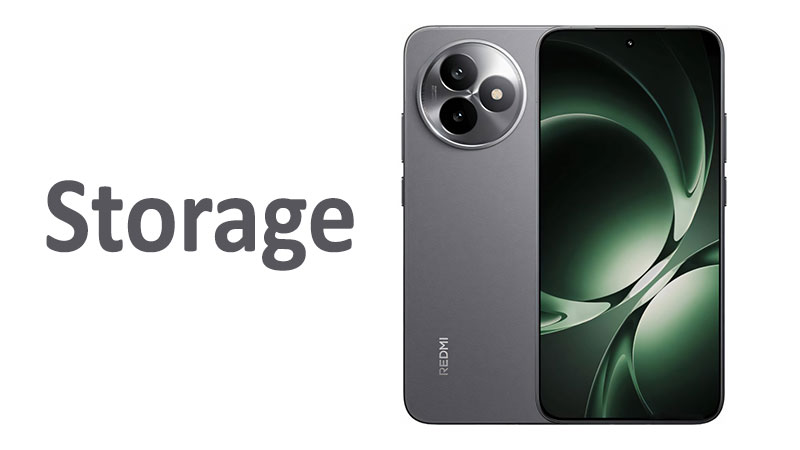In the modern digital world, a smartphone’s storage is more than just a place to hold data. It’s the foundation for your mobile life. From high-resolution photos and 4K videos to demanding apps and games, storage capacity and speed dictate what you can do with your device. This is particularly true for a flagship like the Apple iPhone 16. Understanding Apple iPhone 16 storage options is crucial for anyone considering a purchase. This comprehensive guide will break down everything you need to know about the storage capacity and type of the new iPhone 16.
iPhone 16 Storage Capacity: Options and Considerations
Apple has equipped the iPhone 16 with three main storage tiers: 128GB, 256GB, and 512GB. This range offers flexibility for a variety of users. Choosing the right capacity is a critical decision. It directly impacts the phone’s price and its longevity as a useful device. Unlike many Android phones, iPhones do not have a card slot for external memory. This means the storage you buy is the storage you will have for the life of the phone.
128GB: The Base Model for Light Users
The 128GB model is the entry point for the iPhone 16 lineup. This option is ideal for users who primarily use their phone for basic tasks. This includes social media, web browsing, and messaging. If you stream most of your music and videos and rely on cloud services like iCloud or Google Photos, 128GB might be enough.
Pros:
- Most affordable entry point into the iPhone 16 lineup.
- Sufficient for users who don’t store large media files locally.
Cons:
- Can fill up quickly with high-resolution photos and videos.
- Limited space for large mobile games and offline media downloads.
- Not future-proof for users whose habits may change over time.
Comparison with iPhone 15: The base iPhone 15 also started at 128GB. This continuity shows Apple’s belief that this capacity remains a viable starting point for many customers.
256GB: The Sweet Spot for Most Users
The 256GB storage tier is the most popular choice for a reason. It offers a great balance of price and capacity. This option provides ample space for most users. You can comfortably store thousands of photos and videos. You can also download a large library of apps and games. It is a smart choice for those who want to use their phone for several years without worrying about running out of space.
Pros:
- Plenty of space for a mix of photos, videos, apps, and games.
- Offers better longevity and peace of mind.
- Excellent value for money.
Cons:
- Higher cost than the 128GB model.
- Heavy users of 4K video or RAW photos may still find it restrictive.
Comparison with Competitors: Many competing flagship phones also offer 256GB as a standard or recommended option. This capacity has become the industry benchmark for a premium user experience.
512GB: For the Creator and Power User
The 512GB model is designed for a specific type of user. This includes content creators, photographers, and mobile gamers. If you regularly shoot 4K video, especially in formats like ProRes, or take high-resolution ProRAW photos, this capacity is a necessity. It is also perfect for those who want to download entire seasons of TV shows and a vast collection of high-end games.
Pros:
- Massive storage for all your content creation and media needs.
- Eliminates storage anxiety for even the heaviest users.
- Future-proof for the next several years.
Cons:
- Significant price increase.
- Overkill for the average user.
Comparison with iPhone 15: The availability of a 512GB option on the standard iPhone 16 model gives power users an alternative. Previously, higher storage tiers were often a key differentiator for the Pro models.
iPhone 16 Storage Type: NVMe Explained
Beyond capacity, the type of storage technology is equally important. The iPhone 16 uses NVMe (Non-Volatile Memory Express) flash storage. This is a crucial detail for understanding the phone’s performance.
What is NVMe?
NVMe is a communication protocol specifically designed for solid-state drives (SSDs). It allows data to be read and written at incredibly high speeds. This technology takes full advantage of the low latency and parallel nature of flash memory. It is a massive improvement over older standards like SATA.
Why NVMe Matters for the iPhone 16
The use of NVMe storage on the iPhone 16 provides several key benefits:
- Blazing Fast Speeds: NVMe enables rapid app loading, swift file transfers, and seamless multitasking. When you open a large app or game, the data is accessed almost instantly.
- Improved User Experience: The responsiveness of the phone is directly tied to its storage speed. An NVMe drive ensures a smooth, fluid user interface with no lag.
- Enhanced Performance: The new A18 chip can process data at a phenomenal rate. The NVMe storage ensures the chip is not bottlenecked. This allows for powerful features like on-device AI and advanced computational photography to run without a hitch.
- Efficient Power Use: NVMe is designed to be highly power-efficient. This contributes to the iPhone 16’s impressive battery life.
Comparison with Previous Models and Competitors: While Apple has used similar high-speed flash storage for years, the optimization of NVMe with the A18 chip is a significant step forward. It allows the iPhone 16 to handle intensive tasks that were once reserved for desktop computers.
No Card Slot: The Pros and Cons
A point of long-standing discussion is the lack of a card slot on the iPhone. The iPhone 16 continues this trend. It does not have a card slot for microSD cards. This is a deliberate design choice by Apple.
Pros of a No-Card-Slot Design
- Security and Reliability: Apple has complete control over the storage hardware and software. This ensures a secure and reliable experience. Third-party memory cards can be prone to failure, malware, and performance issues.
- Optimized Performance: The internal NVMe storage is deeply integrated with the A18 chip and iOS. This allows Apple to fine-tune performance. An external memory card would introduce a potential bottleneck.
- Simplicity: The all-in-one design is straightforward. Users don’t need to manage external storage.
Cons of a No-Card-Slot Design
- Fixed Capacity: Once you buy your iPhone, the storage is fixed. You cannot add more later. This makes the initial purchase decision even more critical.
- Higher Cost: Upgrading the internal storage on an iPhone is more expensive than buying an equivalent-sized microSD card.
- Less Flexible: You cannot easily transfer large files to a computer using a memory card. You must rely on cables, cloud services, or wireless transfer protocols.
Important Points a Buyer Should Know
When considering Apple iPhone 16 storage, a potential buyer should be aware of a few key things.
- The initial purchase is final: You cannot upgrade your storage later. Choose a capacity that will meet your needs for the phone’s entire lifespan.
- Think about your habits: Do you download many movies? Do you play large games? Are you a prolific photographer or videographer? Your usage patterns are the best indicator of how much storage you will need.
- Cloud is not a substitute for local storage: While cloud services like iCloud are great for backup, they are not a perfect substitute. You still need local storage for fast access to your most-used data.
- The starting point is a better value: The price difference between the 128GB and 256GB models is often small in comparison to the total cost. This makes the 256GB model an excellent value proposition for many.
- NVMe is a performance driver: Understand that the speed of the storage is just as important as the size. The NVMe technology ensures the iPhone 16 remains fast and responsive.
Conclusion
The Apple iPhone 16 storage story is one of capacity, speed, and strategic choice. With options of 128GB, 256GB, and 512GB, Apple caters to a wide range of users. The base 128GB is a good starting point for light users who rely on streaming and cloud backups. The 256GB option is the ideal choice for most people. It offers a perfect blend of space, value, and future-proofing. For professionals and content creators, the 512GB model is a necessary investment.
The phone’s internal storage is a high-speed NVMe flash memory. This technology ensures top-tier performance for everything you do. It supports the powerful A18 chip and the advanced features of iOS. While the lack of a card slot means your storage is fixed, it also ensures a highly optimized, secure, and reliable user experience.
Ultimately, the best storage choice for you depends on your personal usage. Assess your current needs and anticipate future habits. The right decision now will ensure your iPhone 16 serves you well for years to come.
FAQ
For most light users who stream content and use cloud services, 128GB is sufficient. However, if you plan on taking many photos and videos or downloading large apps and games, you should consider a higher capacity.
No, the iPhone 16 does not have a card slot. The internal storage capacity you choose at the time of purchase is permanent.
NVMe is a high-speed storage technology. It allows data to be read and written very quickly. This is important for the iPhone 16 because it ensures apps open instantly, files transfer rapidly, and the phone’s overall performance is fast and responsive.
The iPhone 16 offers the same storage capacities as the iPhone 15, starting at 128GB. However, the internal NVMe storage may see performance optimizations due to the new A18 chip.
For serious mobile gamers, the 256GB or 512GB model is recommended. Many high-end games can take up several gigabytes of space. A larger capacity ensures you have enough room for multiple titles and future updates.




Thanks on your marvelous posting! I genuinely enjoyed reading it, you might be a great author.I will be sure to bookmark your blog and will eventually come back in the foreseeable future.
I want to encourage that you continue your great posts, have a nice morning!